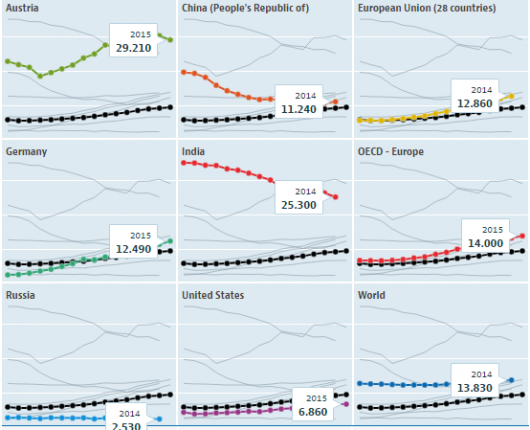“Energy demand by 2050 could be about the same as in 2015, thanks to significant energy efficiency improvements. The supply mix however, would change substantially, with the share of renewables in total primary energy supply reaching two thirds by 2050“ (IRENA).
What is energy efficiency? It’s simply delivering less energy but providing the same service or even more. The savings will impact not only on the energy consumption but also on the economic side of the matter. Of course, the savings are much more noticeable in large areas than in small ones, but the good news is that we only speak about the differences in amounts and not in concepts.
The second part of the story is renewable energy which is very abstract and needs more precision. According to OECD, “renewable energy is defined as the contribution of renewables to total primary energy supply (TPES)”. This term includes such energy sources as solar, wind, geothermal, hydro, ocean (tide and wave) and biomass (material obtained from living or recently living organisms, for example, wood waste and crops or animal material) to generate electric power. The share of each source of renewable energy is not the same across the world showing large differences. For example, in Latin America, Asia or Africa the use of biomass comes to up to 40% while in EU the maximum use is as high as 10%. In terms of wind energy, the 80% of the total installed wind power capacity of the world is housed by the 8 countries: France, Canada, UK, Spain, India, Germany, USA and China, according to their cumulative installed wind power capacity.
We expect that the contribution of different countries in renewables would not be the same. Let’s see the latest official data available in OECD database of industrialized countries in terms of percentage of primary energy supply from 2000 to 2015 (Figure 1).
Figure 1. Energy Statistics of OECD Countries: Renewable energy as total % of primary energy supply, 2000 – 2015
Source: Extended world energy balances, OECD Data. Renewable energy.
All the data are shown individually for each country, such as Australia, China, India, Germany, Russia and USA, and sets of countries such as EU-28, OECD-Europe and World, in comparison with OECD-Total marked in black. The OECD-Total contribution in renewables progressed from 6% of primary energy supply in 2000 to 9,6% in 2015. While we appreciate a significant contribution of some countries – Australia with 29,2% and India with 25,3%, both in 2015 – there is much less contribution although with a rising trend of some others – EU-28 and Germany with approximately 3 points and OECD-Europe with 4,5 points above OECD-Total in 2015. The countries like Russia and USA show their marks below the OECD-Total trend with 2,5% and 6,9% in 2015, respectively. The case of China is different: although its contribution in 2015 is above the OECD-Total mark – 11,2% – the country experienced a sharp decline since 2000 decreasing the renewables output to 77%.
What we cannot forget is the goals that we must meet for 2050 according to the Paris Agreement: the carbon-dioxide emission intensity of the global economy must be reduced by 85%. And this is possible including the renewables into the electric grid more actively. The role of the governments in this case is important, since they “must create the enabling policy framework to spur the acceleration of the transition, including long-term stability for private investments in renewables” (IRENA).
Read more in:












